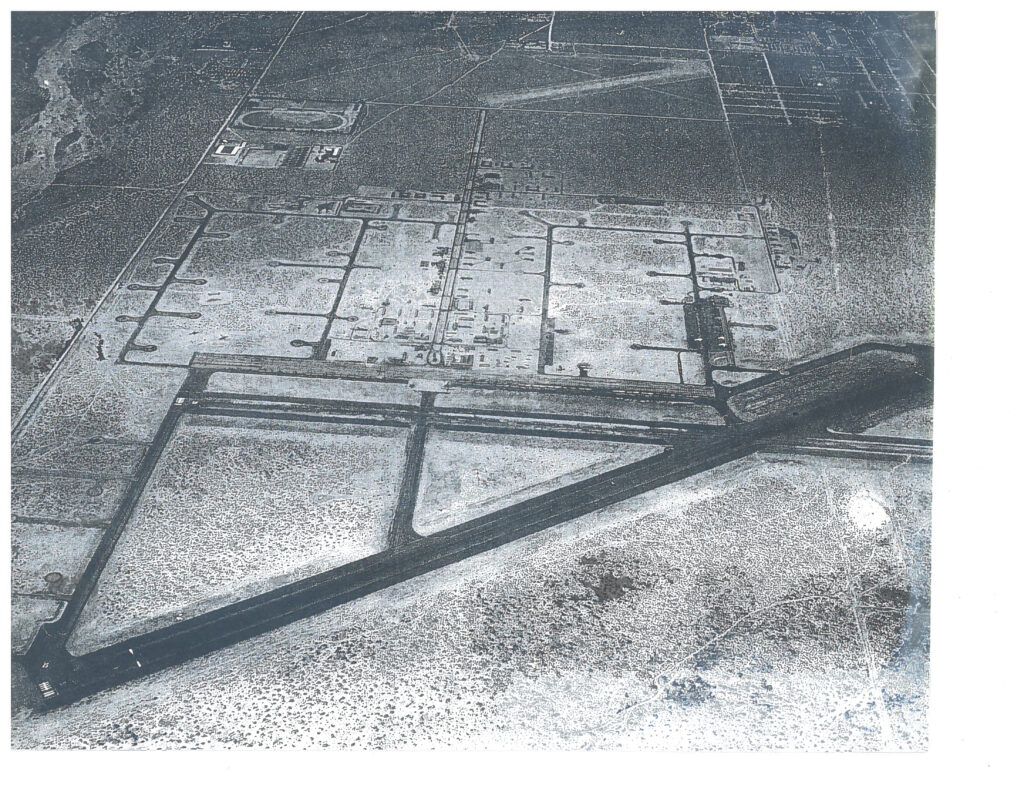Airport History
Palm Springs International Airport (PSP) began as a small army airstrip and has grown into the Coachella Valley’s airport of choice.
Palm Springs International Airport traces its origins to World War II, when the U.S. Army Air Corps of Engineers developed the Palm Springs Air Base. After the conversion of the military base into a municipal facility, the simple runway and small terminal building were leased by shareholders, including Palm Springs icon Zaddie Bunker. In 1959, Palm Springs residents voted to establish an airport commission and renowned architect Donald Wexler was commissioned to design a new passenger terminal building for the airport. Wexler, known for his modernist architectural style, created a unique and innovative structure that incorporated a distinctive folded plate roof and extensive use of glass. The terminal building was completed in 1966 and showcased Wexler’s expertise in creating sleek, functional, and visually appealing spaces. His terminal building is now on the National Register of Historic Places.


Over the years, Palm Springs International Airport has undergone several significant renovations and expansions to accommodate the increasing passenger traffic. The Sonny Bono Concourse was opened in 1999, and the Agua Caliente Concourse was opened in 2009. These additions helped provide a better travel experience for passengers and to accommodate the increasing number of flights to and from Palm Springs. In 2021, the airport expanded its ticketing area and made investments in restroom renovations and infrastructure.
Today, Palm Springs International Airport serves as a vital transportation hub for the Coachella Valley region, connecting travelers to dozens of domestic and international destinations. A record-setting three million passengers utilized PSP in 2022 and the airport continues to plan for the future, bringing in new shops and restaurants, additional airline routes, and improved connectivity between the community and the world.

